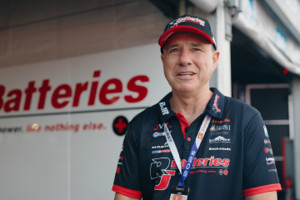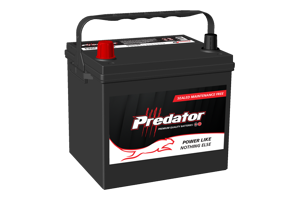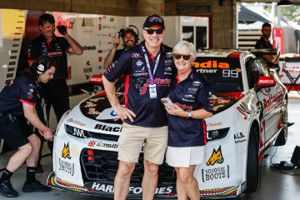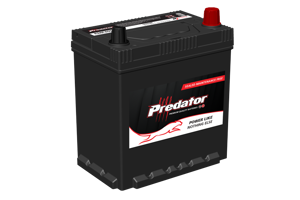The Ultimate Guide to Camping
It is no secret that Aussies love camping and the great outdoors. Camping is the quintessential Australian holiday. Whether it’s a weekend getaway or embarking on the great Big Lap of Australia, many holidaymakers are turning to camping now more than ever and taking their power with them.
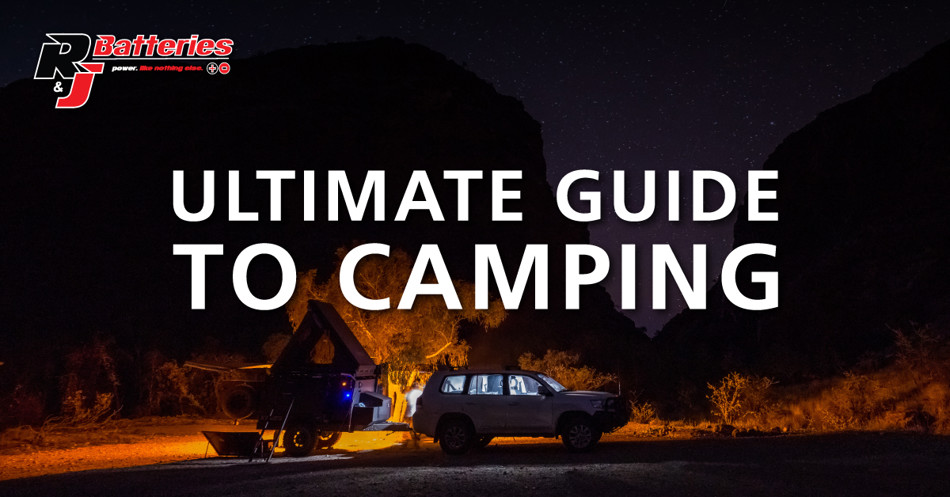
The sheer size of the country means that you can drive for hundreds of kilometres between towns without any accommodation or powered site options. Luckily, Australia is known for its many free camping or unpowered sites that allow travellers the flexibility to save some serious cash and to deepen their connection with nature.
The one downside to this type of travel is needing to manage your power requirements. Whether you’re travelling with just a car and swag, in a 4x4 with rooftop tent or living it up in a caravan, make sure to take the right power with you. This ultimate guide to camping highlights the different types of camping, what your power set-up options are, the maintenance required and how to check your power requirements with our Auxiliary Battery System Calculator
Types of Camping
There are many different types of camping styles in Australia ranging from bush camping with nothing but a swag to glamping in a decked out motorhome. They differ according to the mode of transport, self-sufficiency and the amount of creature comforts one desires.
Free Camping
Free camping sites offer great opportunities to be close to nature and give you more options to stay in unique locations around Australia. Whether you’re staying on the beach, in the bush, or even a mates property, free camping is only allowed on permitted camp sites with a ‘first in best dressed’ policy and will have no access to power and limited, or no amenities.
Showgrounds Camping
A little-known secret to only the most avid of campers, the local show ground or sports ground. Many towns will allow camping at their local showground for a minimal fee, usually with a self-registration onsite. Most sites will have access to water and dump points and the lucky ones even have access to amenities. These stays are based on “first in best dressed” policy and generally cannot be booked in advance.
Powered & Unpowered Sites at Caravan Parks
Almost every town in Australia will have a caravan park with powered and unpowered sites available for tents, caravans or booking a cabin. The powered sites are fantastic for topping up your batteries, while the unpowered sites will require you to bring your own power supply. These sites can be booked weeks or months in advance. Whilst some of the more sought after site can have their own wait lists.
Camping Methods
- Backpacking
- Packing your car with a swag or tent
- 4x4 Rooftop Tent
- Campervan
- Caravan
- Motorhome or RV
- Renting a glamping site
While camping is an excellent way to be away from the hustle and bustle of everyday life and be one with nature, it can be quite difficult to forego modern conveniences that we have become accustomed to. There are many reasons why campers need access to power. Phones need to be recharged regularly to stay in touch with family or contact emergency services. Those striving for off-grid living need electricity to power appliances like fridges, kettles, toasters, air conditioners and everything else to be self-sufficient, or digital nomads who need access to the internet to get work done remotely.
How Much Power Do You Need?
The style of camping, the mode of transportation and how many creature comforts you’re taking, all dictate how much power you will be needing during your trip. If you are camping in a campground or caravan park with access to electricity, you may not need as much back up power. On the other hand, if you are camping in the outback, or with unpowered sites, having power available is crucial.
Factors to consider:
- How long will you be camping for?
- How many people are travelling with you?
- What type of vehicle are you taking?
- What accessories and gadgets require power?
- How much power will these gadgets use?
Figuring out how much power you need for your devices is easy with our Auxiliary Battery System Calculator or you can visit one of our R&J Batteries branches and discuss your needs in person.
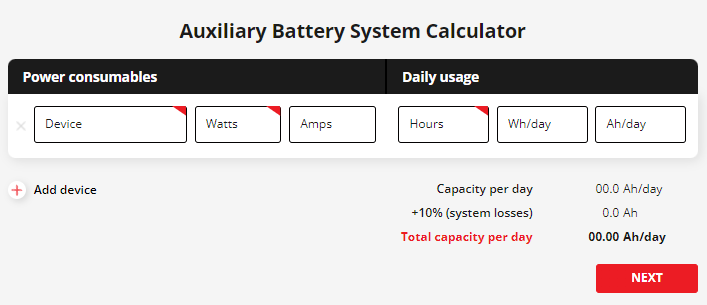

The Backpacker $
(minimalist camping)
Some people only need the essentials to enjoy a good hiking or camping trip: a fire, an esky and a tent. But even then, you will need a small backup power source to keep the essentials like your phone, charged and ready to go in case of an emergency.
Recommended Set-up
Battery: Not Required
Battery Upgrade: Not Required
Box: Not Required
Accessories: REDMAX Portable Solar Bank
This set up uses nothing more than having a REDMAX Portable Solar Bank on deck. The REDMAX Solar Power Bank features a 20,000mAh (20Ah) lithium battery which allows travellers to charge small devices such as phones multiple times before needing to recharge. It comes with 2 standard USB outputs and 1 USB-C output and most importantly, the ability to recharge by solar power. Learn more about this product here.

The Weekender $$
(1-2 nights away, 2-4 times a year)
Beginners and those doing bush style camping with minimal to moderate power requirements. They may only have a few things like phones, portable speakers, GPS navigation or occasionally a 12v fridge.
Recommended Set-up
Battery: Delkor HDC Range
Battery Upgrade: Predator PDC AGM
Box: REDMAX Power Boss
Accessories: REDMAX Solar Blanket, REDMAX Solar Charge Controller, OZCharge 12V Battery Monitor, Projecta IDC25, OZCharge PRO600
Optional Upgrades: PowerHub RM1000PH, Projecta IDC25X, Projecta IC10
This set-up allows for a bit more power and includes a deep cycle flooded lead acid battery placed within a pre-wired battery box. We recommend the REDMAX Power Boss which has multiple outlets that allow you to charge and power your 12V devices along with most devices requiring a USB 3.0 or USB C port. The REDMAX Power Boss also has Anderson plugs for caravan connections and providing easy charging via solar. It also provides a voltage meter to easily check the state of charge so you can top it up via a battery charger, the car or solar power via the REDMAX Solar Blanket or panels. A Projecta IDC25 can then be installed to allow the battery to charge efficiently while you are driving.

The Explorer $$$
(Camping enthusiast. 2-3 nights away, 4 or more times a year)
Adventure enthusiasts seeking to get away from the daily grind at every opportunity or those that require longer lasting and reliable power for work or other necessary appliances.
Recommended Set-up
Battery: Hardcore DC AGM Range
Box: REDMAX Power Boss
Accessories: REDMAX Solar Blanket, REDMAX Solar Charge Controller OZCharge 12V Battery Monitor, Projecta IDC25, OZCharge PRO600
Optional Upgrades: PowerHub RM2000PH Lithium Battery, Projecta IDC25X, Projecta IC10, REDMAX Fixed Solar Panel
The Explorer would look to have a longer lasting battery than the Weekender. The set up using the REDMAX Power Boss is the same, however we’d recommend an AGM battery which will last longer between charges and has a greater cycle life. At this level of camping, having a REDMAX Solar Blanket or fixed panels is recommended for easy charging of the battery. A Projecta IDC25 can then be installed to allow the battery to charge efficiently while you are driving.

The Day Tripper $$$-
(Road Trips. One battery for multiple vehicles)
This type of camper is looking for the most amount of flexibility, or an all-in-one unit. They may like to take regular road trips and need a way to power the fridge or might be a camper that does not head out too often but finds themselves needing power on the go. They also may want one setup that can be used across multiple vehicles. They not only want to take their 12V DC devices camping, but also their AC mains powered appliances as well.
Battery & Box: PowerHub RM1000PH
Accessories: REDMAX Solar Blanket, REDMAX Solar Charge Controller
Optional Upgrades: PowerHub RM2000PH, REDMAX Fixed Solar Panel
The REDMAX Portable PowerHub is a rechargeable battery powered generator. It contains a rechargeable lithium battery and a BMS to safely store energy which can then be supplied as either AC mains powered devices or 12V DC voltage along with power to charge USB devices. The REDMAX PowerHub can be used to deliver safe and reliable power for devices when camping as well as in emergency situations when reliable power may not be available.

The Nomad $$$$
(living on the road/off the grid, or, likes to have all the mod cons, glamping)
The Nomad is nearly always on the road. Living or working remotely in and out of caravan parks and free camp sites. They require power on the go for remote working or powering their daily accessories. If you plan on having all the comforts of home, and using your set-up often, then this is the set-up we recommend.
Recommended Set-up
Battery: Predator PLI Lithium
Battery Upgrade: ALLiON Lithium
Box: REDMAX Power Boss
Accessories: REDMAX Solar Blanket, REDMAX Solar Charge Controller, Projecta IDC25, OZCharge Pro2500L, Projecta IP1000
Optional Upgrades: PowerHub RM2000PH, Projecta IDC25X, Projecta IC25/35/50, REDMAX Fixed Solar Panel
The Nomad would want to upgrade further to a Lithium Iron Phosphate (LiFePO4) battery. LiFePO4 batteries are the safest lithium technology on the market as they are stable and incombustible. They can deliver up to 6 times the cycle life of lead acid batteries and can be discharged down to around 90% before needing a recharge. Our Predator PLI and ALLiON lithium batteries are a great choice to keep your essential appliances powered. Installing fixed REDMAX solar panels and regulators on your vehicle or caravan would also be recommended at this level to ensure easy, fuss free charging of the lithium battery.

Permanent Camping Set-ups
The camping set ups described above are portable. However campers can benefit from a permanent dual battery system installed in a vehicle to help power their batteries whilst travelling. There has been an increase in not just retirees embarking on the Big Lap of Australia but also an increase in young people quitting their jobs to travel full time as well. For these campers, a more permanent power set up would be more rewarding to create a home away from home.
Many vehicles have the capacity to be fitted with a dual battery system which keeps the primary starter battery and adds an auxiliary deep cycle battery. A dual battery system will isolate and preserve the primary battery to make sure that there is enough power to start the vehicle while the auxiliary battery powers all the essential camping appliances.
The battery management system in the Predator PLI and ALLiON lithium batteries displays important information such as State of Charge (SoC) and how much current is currently being used by the appliances or being received from the battery charger. The set up could also include an inverter to power your AC mains power appliances.
If you are using a lead acid battery based system, you can use a Bluetooth battery monitor to be keep an eye on your current SoC. Although, if you want to view your charge and discharge current, you will need to install a monitor or system that incorporates a shunt.
We will talk more about permanent camping set ups such as those for 4x4’s, caravans and campers in a future article.
Taking care of your camp’s power set up
Whether you go camping occasionally or you live permanently on the road, it is important to take care of your camping battery and power set up. Here are some things to keep in mind:
1. Charge Your Battery
Before and after the trip, check your battery’s voltage and ensure your battery is fully charged to the correct level. Overcharging can damage the internal structure of the battery while undercharging can shorten its lifespan.
Lead Acid Battery (Flooded or AGM)
The charger should not output more than 10% of the battery capacity (Ah) of the battery (i.e. 100Ah battery should ideally be charged at 10A or less). This will extend the life of the battery.
Lithium Iron Phosphate (LiFePO4)
Check the recommended charge current on the battery’s Product Data Sheet (sometimes this can also be found on the battery label). Generally speaking, the recommended charge rate is 50% of the capacity of the battery. This means that a 100Ah LiFePO4 battery would have a charge rate of around 50A.
You can use a Projecta or OZCharge battery charger to assist with this. Make sure the charging algorithms match the battery type (Calcium, Flooded, AGM, LiFePO4).
2. Store Properly
Never store your lead acid camping battery in a discharged state because it can lead to a reduced capacity and eventually the need to purchase a new battery. Keep the battery in a cool and dry place with plenty of ventilation. A lead acid battery should always be store at 100% SoC, whereas a LiFePO4 battery should be stored at less than 90% SoC if being stored for an extended period.
3. Inspect your Battery & Connections
Inspect the battery to see if there are any signs of damage, dirt, corrosion, or warping. Check if there is any bulging of the case walls or leakage from the seams. While you are at it, check to see if the terminals, screws, clamps and cables to battery box or charger are damaged or have loose connections. Tighten or replace them if necessary however do not overtighten them as this can cause damage or leaks at the post. Avoid using any type of terminal spray - these substances are insulators and can adversely affect current flow.
4. Clean Solar Panels
Before you leave, make sure to clean, inspect and test your solar panels to ensure they are working effectively. If you are unsure if your panels are working, you can call into your local R&J Batteries branch for a free check. To clean your panels, just use water and a mild detergent like dishwashing soap or car wash, along with a soft sponge or cloth. Give them a gentle clean then rinse off with clean water.
5. Prevent Accelerated discharging
Turn power switch to off on your REDMAX Power Boss, or if you have a REDMAX Power Hub, switch off the unit when not in use. This will prevent over discharging the battery which can cause damage. Make sure to recharge your batteries or your Powerhub as soon as possible after discharging.
Takeaways
Camping is a rewarding experience that offers multiple physical, mental and social benefits. Camping can be an educational experience for children, a great stress reliever for everyday workers or a lifestyle change for retirees. Make this experience complete with a reliable power set up that will give you those extra creature comforts with piece of mind.
Before embarking on your next camping trip, be sure to drop by your local R&J Batteries branch for more advice on what set up would work for you. You can also get your vehicle’s battery tested for free to ensure it is up for the journey ahead. If you need a battery replacement, our showrooms feature a range of camping batteries and accessories from world class brands to suit different power requirements, budgets and lifestyle needs.
Explore Deep Cycle Range Calculate your Power Find a Branch
